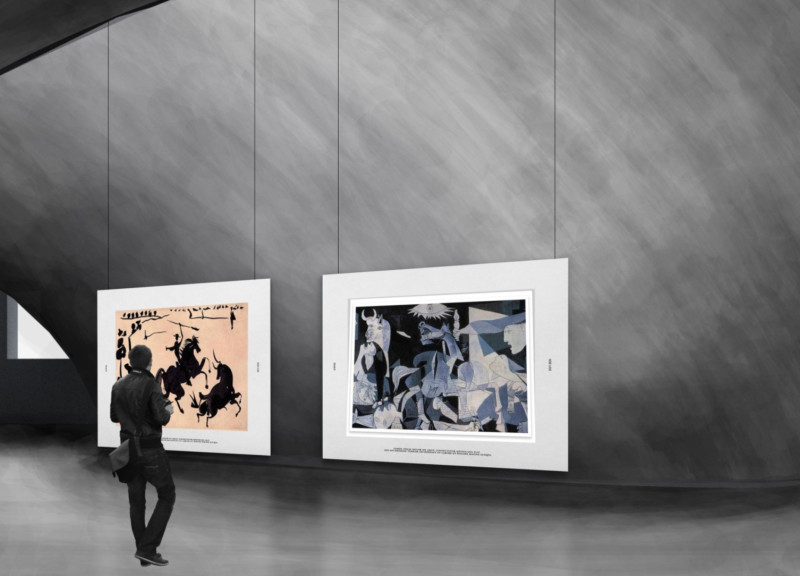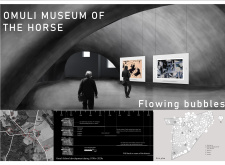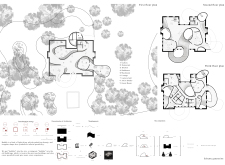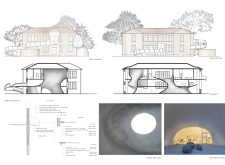5 key facts about this project
Spatial Organization and Function
The museum features a series of interconnected "bubbles" that serve specific functions, facilitating an intuitive visitor experience. These bubbles include a main gallery space for curated exhibits, a restaurant that offers a unique culinary experience, a lecture hall for educational programs, and artist studios designed to foster creativity. The layout is designed to promote fluid circulation, allowing visitors to engage with the exhibits at their own pace while discovering various aspects of equine culture. The integration of natural light through strategically placed glass elements enhances the spatial quality, creating an inviting atmosphere conducive to learning and exploration.
Unique Design Approaches
The design of the Omuli Museum distinguishes itself through its use of unconventional forms and materials. The architectural strategy focuses on deconstructing traditional museum design, moving away from linear pathways to a more organic flow that mirrors the dynamism of the subject matter. This approach not only encourages deeper visitor engagement but also promotes a sense of community interaction among various spaces. The material palette, which includes concrete for structural integrity, glass for transparency, wood for warmth, stone for texture, and aluminum for durability, contributes to the overall aesthetic and functional performance of the building.
Integration with the Landscape
Another notable aspect of the design is its seamless integration with the surrounding landscape. The museum is set within a carefully landscaped environment, allowing for outdoor spaces that complement the indoor experience. This connection fosters a dialogue between architecture and nature, encouraging visitors to explore both the museum's interior and its exterior surroundings. The design takes into consideration the historical context of the site and aims to preserve the narrative of the local community while introducing modern architectural ideas.
For those interested in delving deeper into the architectural details of the Omuli Museum, reviewing the architectural plans, sections, and design concepts will provide further insights into the thoughtful execution of this project. The interplay of form, function, and context in the design merits closer examination for a comprehensive understanding of its contribution to contemporary architecture.

























